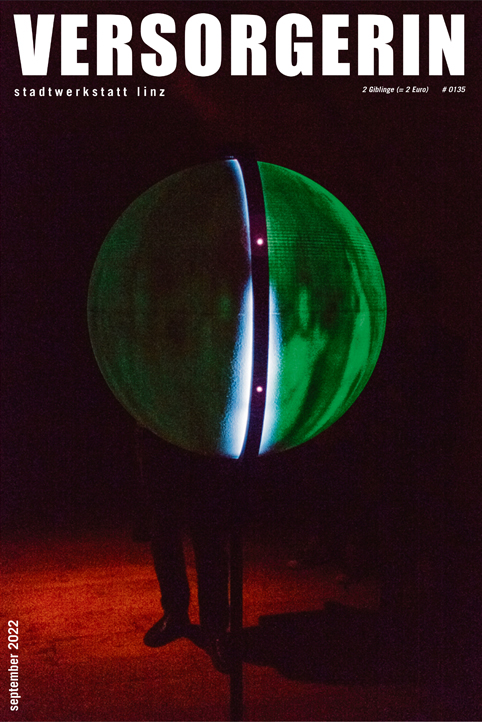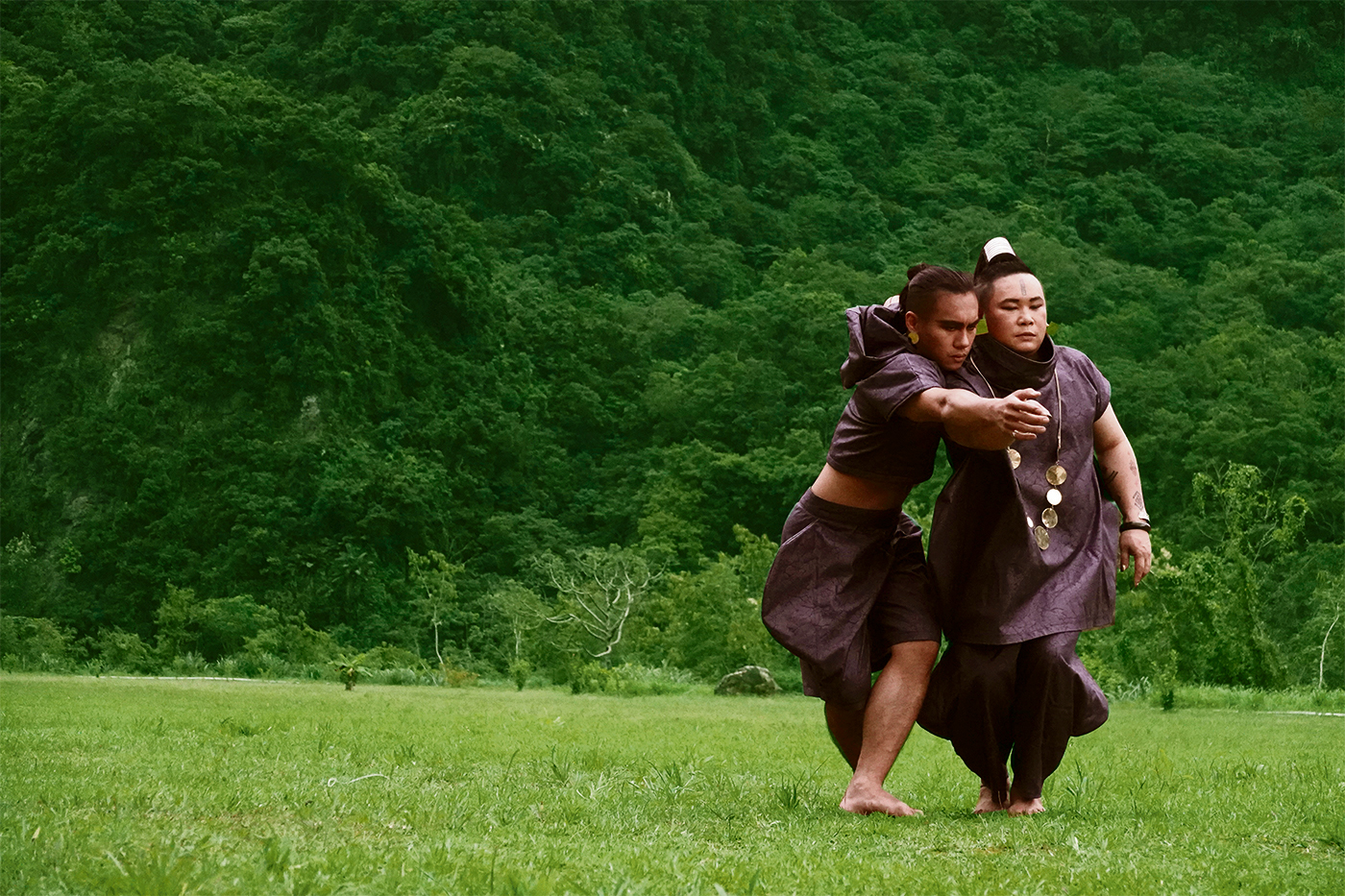Dondon Hounwn fabricated a legend…
The legend has it that long ago, a hunter went hunting in the mountains. Unexpectedly, a sudden downpour had the hunter wandering in the forest until he found shelter in a giant tree hollow. The hunter fell asleep while waiting for the rain to stop. He woke up and heard birds chirping, insects buzzing, finding himself in a fascinating forest where everything seemed to be sparkling. The hunter rambled around and came upon a group of naked people who were embracing each other in great intimacy. The hunter looked closely and found that they were all male but looking like gorgeous women. He asked, »Who are you?« The group answered, »We are Hagay.« The hunter realized he has entered the zone of spirits. The Hagay transmitted to the hunter much valuable wisdom concerning rituals, hunting and weaving. Later, the hunter somehow fell asleep again and woke up to find himself back in the tree hollow and the rain had stopped. The hunter went back to the tribe. He adopted and shared Hagay’s teachings and wisdom. From this time on, the term Hagay refers to a person who possesses both feminine and masculine characteristics in Truku culture.
Based on Dondon Hounwn’s fabricated legend, Hagay Dreaming takes up techno-shamanism and Gaya notion to explore the natural diversity of gender in primeval states, as well as the formation and inheritance of tribal cultural knowledge. Hagay is a third gender, distinct from the binary of male and female – it exists in many tribal societies and has a social function. In tribal traditions, gender has never been as simple as male and female binary. However, Taiwan’s indigenous peoples have been patronized by the dominant mainstream culture and discarded many of their »anachronistic« traditions. Their »gender« awareness regressively »normalized«, believing in distinct division of binary man and woman. The traditional Gaya (a collective concept of rules, norms, taboos, responsibilities, and obligations of the Truku people) has an understanding of non-binary/fluid gender. Gaya is »an ancient law of life that exists in response to one’s personality and environment«, tolerating things that are not permitted by religious norms. Speeches and behaviors deemed improper in society are not regulated in Gaya thinking. In reconceptualizing the notion of Gaya in the technological age, Hagay Dreaming aims to blur the boundaries between tradition and modernity, mixing the ancient myths, legends with electronic technology and filmic languages. As an artist and a practicing shaman in Truku tribe, Dondon Hounwn approaches techno-shamanism with the belief that the long-existing tribal culture is a technology for knowledge production and dissemination. Defying the stereotype of indigenous artwork as traditional crafts, Hagay Dreaming reclaims the speculative, curious, and unconventional quality of technology for developing the possibilities of hypothesis and reinterpretation, applying unpredictable imagination to the pre-set binary technology.
During Lab Kill Lab (Dec 14-20, 2020) held at C-Lab Taipei, Shu Lea Cheang invited Dondon Hounwn and collaborators to join LAB PHYTOPIA where Hagay Dreaming was conceived as a week long lab project that included a forest walk and a test performance. These collaborators include aka_chang (lighting/laser design), Shan Shan Chen (an Amis singer), Ibau (a Paiwan writer) and Tzu-An Wu (experimental filmmaker). Following this initial development, Dondon took the project back to Dowmung tribe in Hualien of Taiwan’s east mountain region and further developed the work with the alternative art space Elug Art Corner he founded in 2015. At Elug, Dondon developed a theatrical script with one prelude and 7 acts, brought in Shih-Min Szu (choreographer/dancer), recruited 5 tribal youths, training them to dance, play traditional music instruments and weaving. Music composer Sayun Chang joined the team and brought with her classic music composition mixed in with traditional tribal tunes. During the weekend of June 24 to 26, 2022, the first edition of HAGAY DREAMING was presented at the Dowmung Tribe Ceremony Space and met with great reception by the tribal people.
Dondon Hounwn often combines praying, traditional instrument playing, and ancient chanting in his theatrical work. He takes rituals as »symbols« to continue the traditional practice of communicating with the spirits, conveying a community’s historical emotions through traditional instrument playing and chanting. In the script the setting starts with a divine welcoming ritual. Dondon recites poems, revealing connections between myths, legends, names of the place, and migration as if situated in a contemporary paradox. The scenario takes us through the forest, the hunter’s dream, leading to the encounter with Hagay. Through ritualistic walks and traditional instrument playing, the group enters the path leading to the ancestral spirits. Entering the spiritual world, Sapuh (medicine), Emsapuh (being healed), Smapuh (embodying the medical power), Dgiyaq (mountains and forests), Mkduyung (family of streams), Dowmung (the Dowmung tribe), Yayung (stream), Phpah (blossoming flower), Qhuni (trees), the laser projection, the music of plants, the resonance of human body all converge and flow into the sea. Forest wandering, dream awakening, Shu Lea Cheang notates the technological visual elements for HAGAY DREAMING to arrive at a techno-fantasia guided theater of revival.
For STWST48x8, HAGAY DREAMING presents a special 48 hour edition to take place on the STWST maindeck where a large scale hollow-tree-like sculpture (3m x 9m x 3.5m) is installed and on the staircase leading to the upper platform where a tribal totem is lit up by laser projection. The prelude and the 7 acts will be performed in various time slots and mixed in with live acts of weaving and singing that involve audience participation throughout the 48 hours. Continuing with Stadtwerkstatt’s New Context approach, two fork out art projects are invited to join with forest walks, workshops and public talks:
- Multiplication of Hagay – a forest walk forking Hagay Dreaming by Špela Petrič proposes a forest walk »Multiplication of Hagay« with the Phytocracy anarchetypes resonate and fork into Hagay Dreaming so that the two fictions refract with the creatures of the forest floor. The premise of the walk is to shift perspective and give attention to the humus sapiens and the vegetal realm, to speculate ex-static relations between plants, fungi and animals, to reflect a process of un-learning and re-yearning. The closeness of forest bodies keeps the tension and aids the process-methodology aimed at sidestepping logocentrism and preparing the terrain for verdant growth.
- Ritucols for Gender Transformation by Adriana Knouf explores different forms of hormonal gender transition, such as those derived more intimately from plants or fungi like vitex or cordyceps, respectively. The practice of cultivation, extraction, and use deserves careful study, especially as it pertains to their more sacred aspects. The project aims to develop »ritucols« surrounding the living beings that help us experience hormonal gender transition. A »ritucol« is a combination of a ritual and protocol, making reference to the sacred and scientific at the same time. Such ritucols would be developed through conversations with others involved in Hagay Dreaming, as well as local transgender people, to further expand the possibilities.

